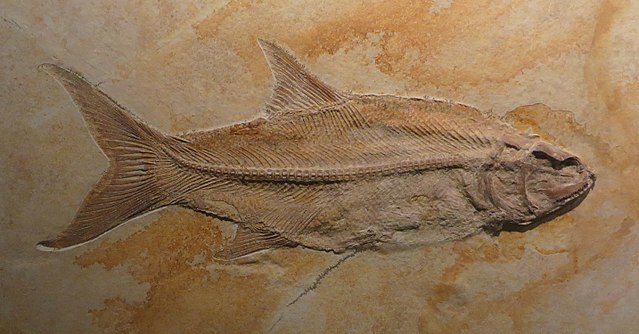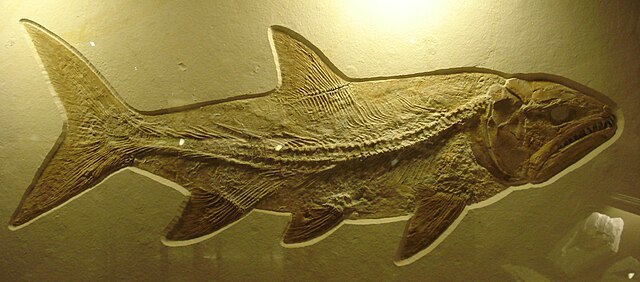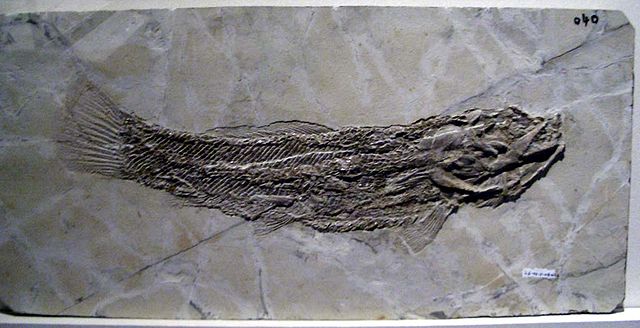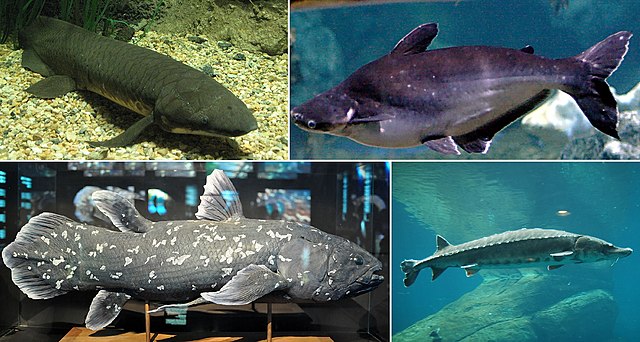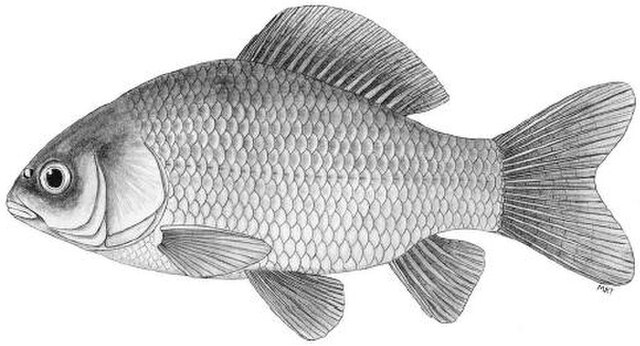Halecomorphi is a taxon of ray-finned bony fish in the clade Neopterygii. The only extant Halecomorph species are the bowfin and eyespot bowfin, but the group contains many extinct species in several families in the order Amiiformes, as well as the extinct orders Ionoscopiformes, Panxianichthyiformes, and Parasemionotiformes. The fossil record of halecomorphs goes back at least to the Early Triassic epoch.
The ionoscopiform †Ionoscopus
The amiiform †Caturus
The amiiform †Calamopleurus
The amiiform †Sinamia
Osteichthyes, also known as osteichthyans or commonly referred to as the bony fish, is a diverse superclass of vertebrate animals that have endoskeletons primarily composed of bone tissue. They can be contrasted with the Chondrichthyes and the extinct placoderms and acanthodians, which have endoskeletons primarily composed of cartilage. The vast majority of extant fish are members of Osteichthyes, being an extremely diverse and abundant group consisting of 45 orders, over 435 families and 28,000 species. It is the largest class of vertebrates in existence today, encompassing most aquatic vertebrates, as well as all semi-aquatic and terrestrial vertebrates.
Osteichthyes
Guiyu oneiros, the earliest known bony fish, lived during the Late Silurian, 425 million years ago. It has a combination of both ray-finned and lobe-finned features.
The ocean sunfish is one of the heaviest bony fish in the world.
Image: Carassius carassius

